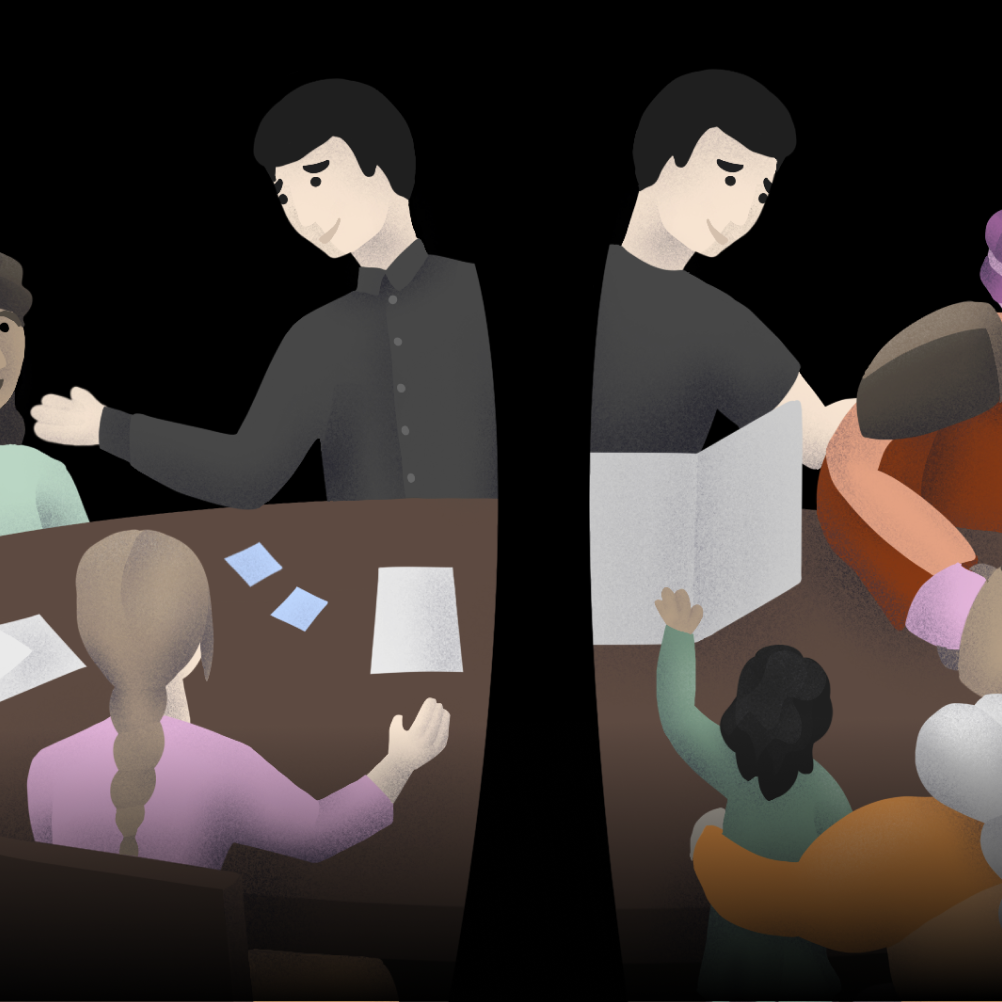In today’s increasingly distributed and remote world, we are all seeking new ways to connect with one another. Connecting with others through conversation and direct observation in product research is how we learn about who they are, what they do, how they do it, and why. Although the pandemic has prevented us from having the intimate encounters we’re accustomed to, we’ve developed an effective way to replicate contextual inquiry without being physically with participants. I’ll share tips on how to do so and provide guidance on how companies can conduct insightful research with product users, even when research can’t be done in person.
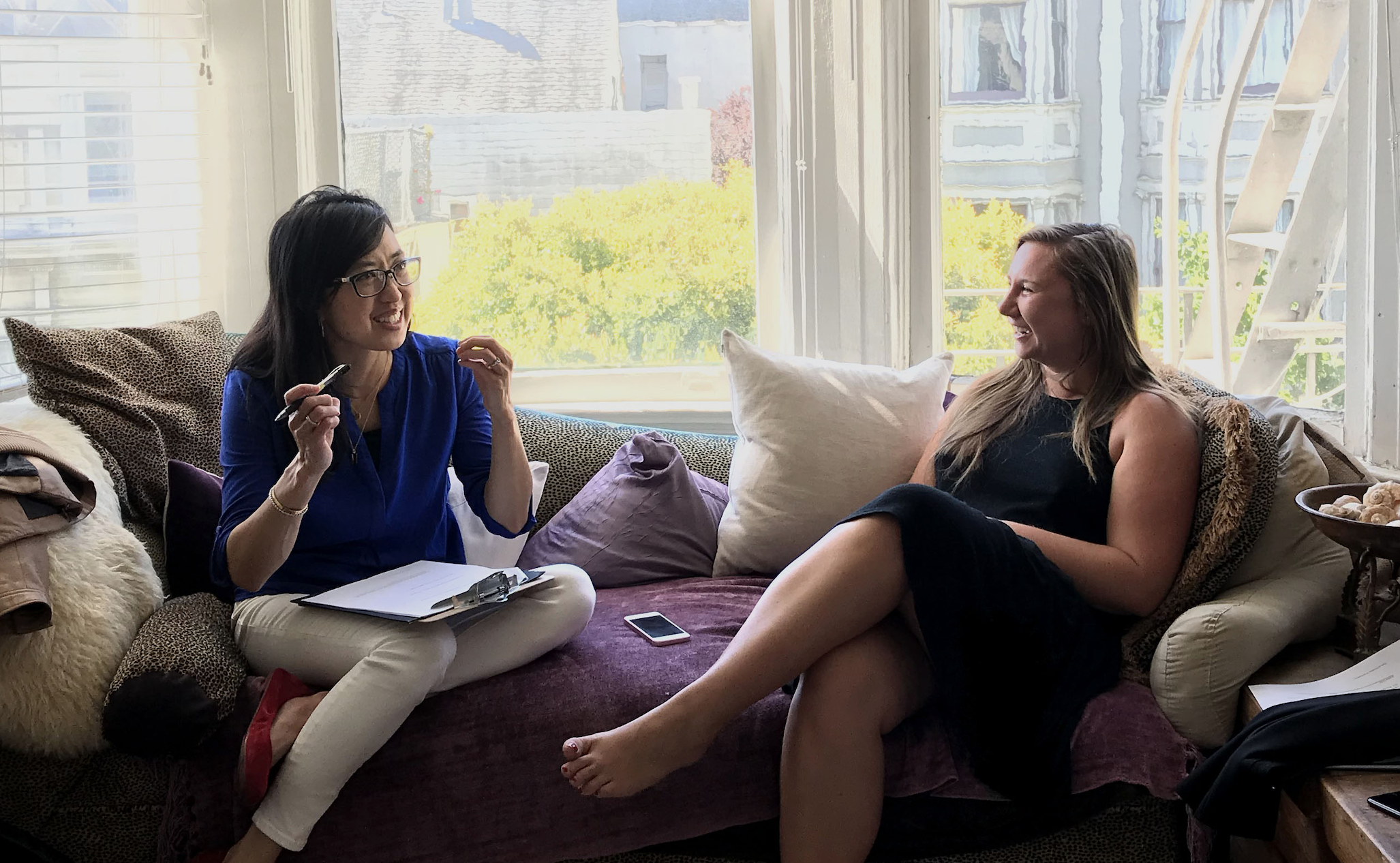
In-Person Contextual Inquiry
Contextual inquiry is a research method design researchers, product designers, and user experience designers rely on that involves in-depth in-person observation and interviews with users in their own environment to gain a deep understanding of their practices and behaviors.
By observing people in their natural environments — at home, at work or in between — people feel at ease and are more eager to share or demonstrate how they live day to day. This in-person conversation and direct observation enable researchers to take a peek into people’s everyday lives. It gives us a valuable opportunity to examine all of the thoughts, feelings and emotions attributed to their challenges, needs and motivations. This method takes place during the generative phase of the design process, where research methods are applied to dually learn about people’s lives while looking for opportunities for design solutions to address pain points illuminated by the research.
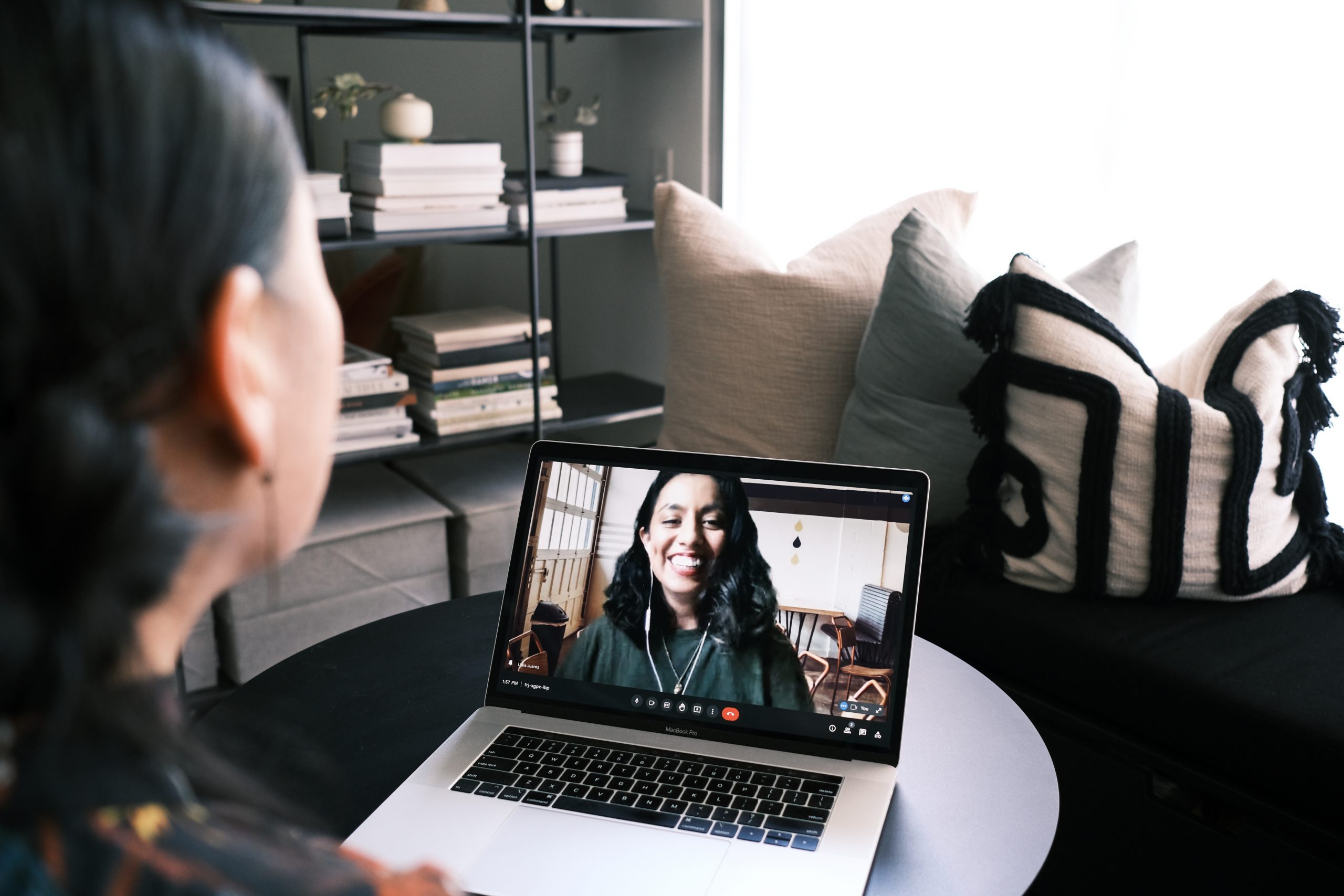
Remote Contextual Inquiry
In a world where it’s not possible to meet or observe in-person, can you still conduct contextual Inquiry effectively? Yes, you can. While it may not be the same as in-person interaction, remote contextual inquiry can still deliver strong value that guides design and product teams.
Here are just a few of the ways we’ve successfully replicated contextual inquiry without physically being with participants. I hope you can apply many of these steps to your own UX and product design research efforts, to inform product and user experience decisions in times of flux.
1. Recruiting Participants
You can speed up the recruitment process using online research platforms like dscout, Ethnio, and User Interviews. These tools enable you to see and hear from participants before beginning your study. Doing your own outreach through social media or partnering with a panel provider, the recruitment, screening and scheduling process can take weeks. Using online platforms can actually cut the timeline down to less than a week or just a few days. You can do this in conjunction with phone based user Interviews.
Things to Keep In Mind:
- Beware of Pitfalls
There is an inherent selection bias when it comes to using these platforms because they draw from a pool of mostly tech-savvy, educated participants who are familiar with video conferencing tools and are comfortable being on-camera. If you’re looking to get to know niche or underrepresented users, an alternative recruiting source (e.g., local community outreach) would be more appropriate.
- Access a Broad Pool of Candidates
Conducting remote sessions enables you to recruit anyone in any time-zone, which breaks down geographic barriers. It also gives you the opportunity to reach people with varied ethnicities, backgrounds, and cultures across the globe (as long as they have an internet connection!) without having to travel anywhere.
- Evaluate the Number of Participants
Try to avoid going overboard on the number of participants. Be diligent and be mindful about how many people you need to talk with. Think carefully about how much value will be added if you include extra participants and consider how that decision will impact the depth of your analysis. When you collect and analyze qualitative data, keep it manageable so that you don’t end up getting overwhelmed by data points which may prevent you from uncovering deeper and richer insights. Go for quality over quantity.
- Be Aware of Device Constraints
Make sure to accommodate any device constraints participants might have. Does the participant have access to a computer and/or smartphone? What can be done over the phone? Can a participatory activity be done without a screen share? Oftentimes a laptop doesn’t have the mobility (as a phone does) to maneuver and show the researcher the full context of the participant’s surroundings. Depending on the activity, make sure the participant’s device(s) can support their involvement.
- Be Mindful of People’s Personal Situations
As the world continues to change and paradigms shift, people are adjusting to new ways of working and living. Participants could be experiencing financial hardship or unusual levels of stress and anxiety. We’ve learned that we need to be flexible and give participants extra time and space when they participate in the research.
2. Preparing for Remote Contextual Interviews
Once you select participants, reach out to them individually and inquire if they have any questions (prior to doing a user interview or running the diary study) as a way to establish a good relationship from the start. It’s also important to introduce the video conferencing tool and set expectations for the activities in pre-interview communications. Internet connectivity can be an issue, so making sure that the participant does a test beforehand is key. The participant should also sign the consent forms prior to the interview so the moderator can jump right into the sessions without having to waste precious time dealing with paperwork and logistics. It can also be helpful to let participants know what they can expect during their session with the researcher by providing instructions and an agenda ahead of time.
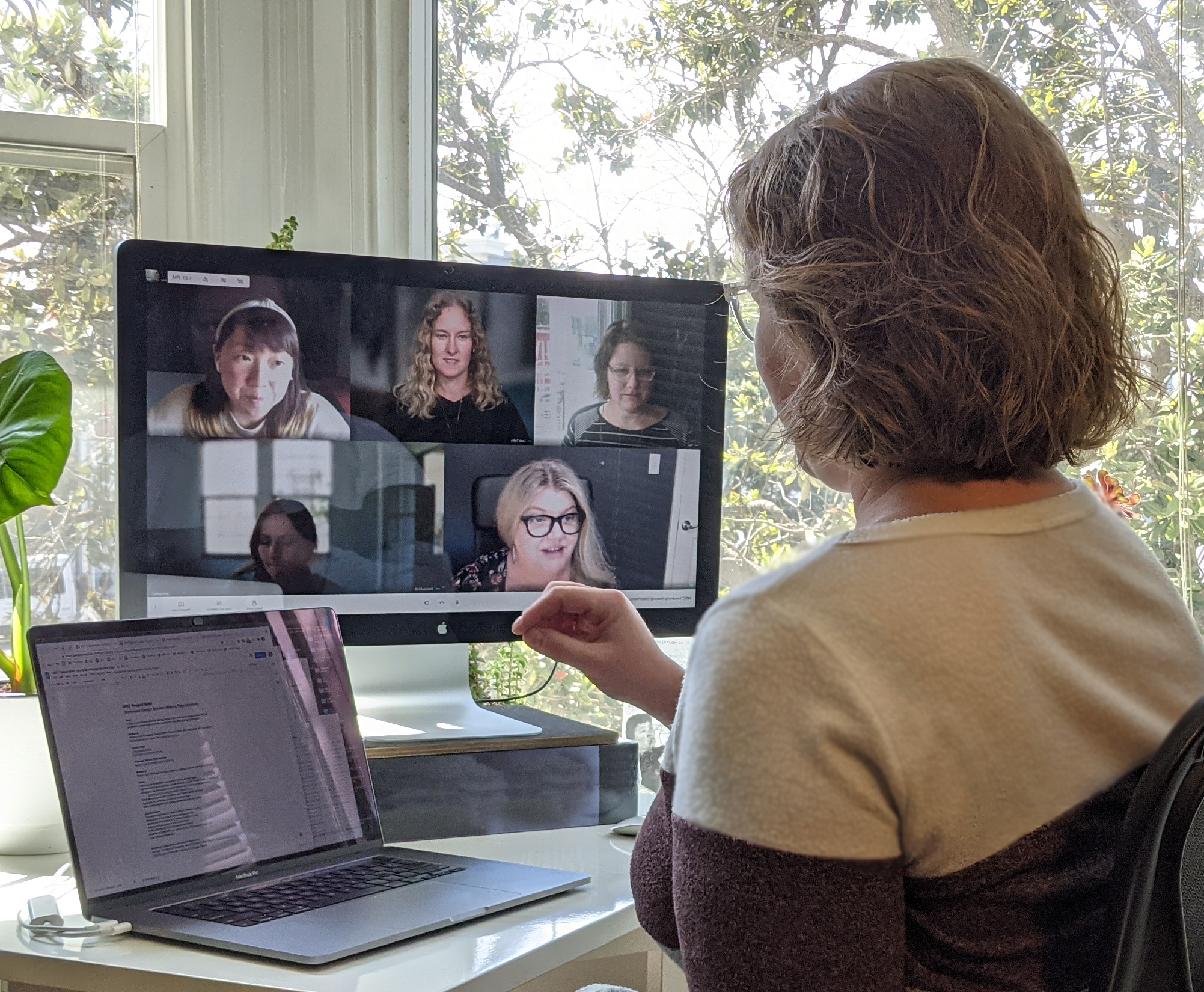
Things to Keep in Mind:
- Do a Little Pre-Work
Send out a pre-interview questionnaire to gain insight about the participant prior to the remote interview. This information creates a preview about the participant and enables us to craft customized questions related to their specific or unique behaviors, as well as document an inventory of personal items or devices they may own.
- Make It Contextual
Ask participants to capture (either ahead of time or during the interview) their space, devices, personal belongings, etc. through photos or video walkthroughs. Ask them to “Think Aloud” and describe in detail what they are showing and doing and where. Ensure that the participant is located in the authentic context of their activity.
- Document the Session
Record the interview and transcribe the meeting (Rev.com); Tools like Zoom and dscout feature automatic transcription.
- Invite Stakeholders
Although remote interview sessions are recorded so anyone can view them afterwards, it’s beneficial for stakeholders to commit to watching them “live” and guarantee that they hear directly from their customers and understand where they are coming from. By observing their customers firsthand, they’re more inclined to advocate for the people and the processes involved in designing their products.
3. Facilitating User Interviews & Building Empathy
It’s much more challenging to gain trust and get folks to open up through a screen. At the beginning of an interview, try showing your own vulnerability (“My kid is home today and might pop in”) or share more about yourself than you might share if you were in-person. It’s a moment to step away from the research and be just a real person the participant can relate to. It’s best to keep the introduction lightweight and inviting.
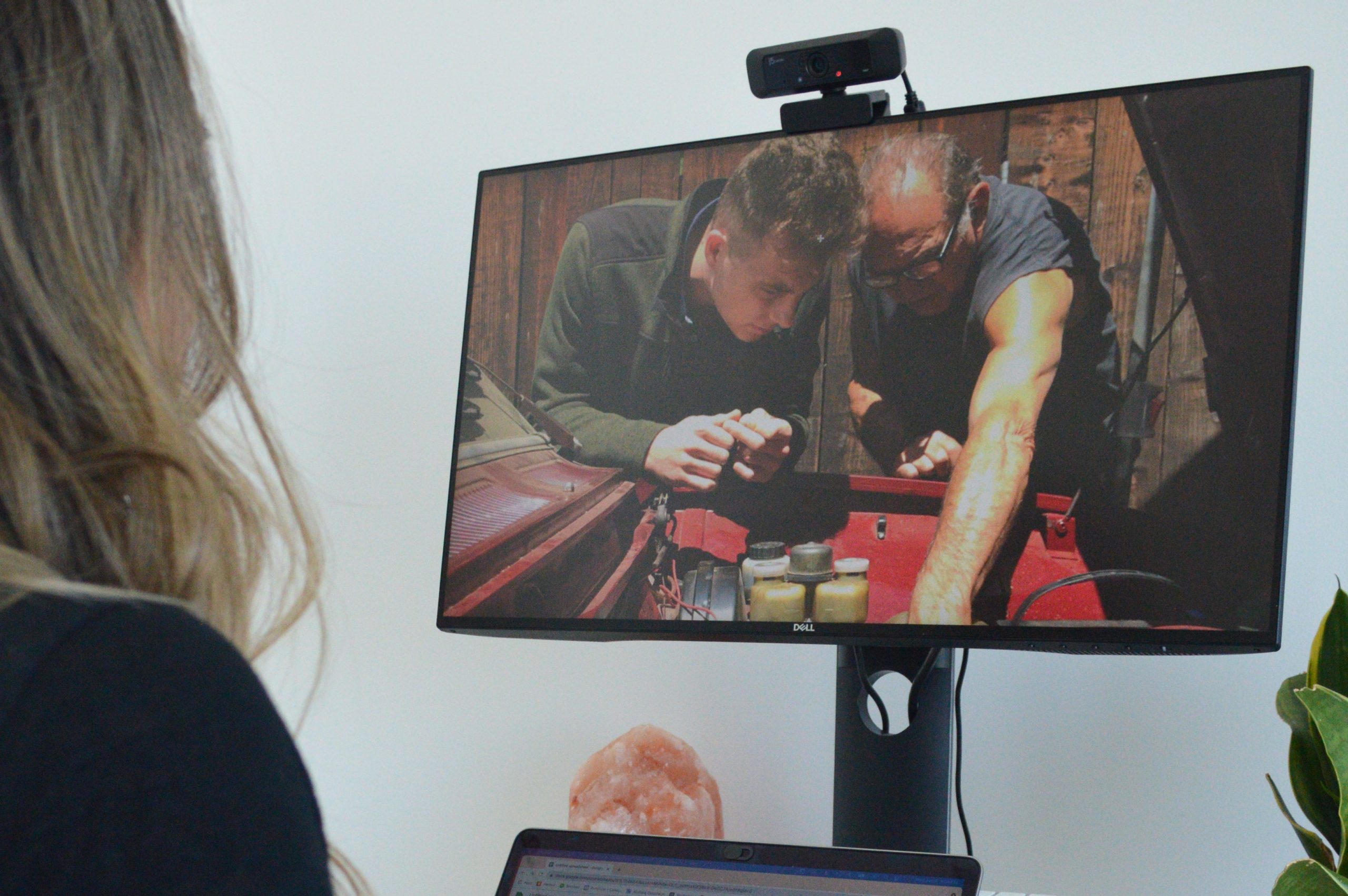
Things to Keep in Mind:
- Personalize the Discussion Guide
Take the time to tailor interview questions in a way that has personal meaning and context for each participant based on existing information from screener responses or diary study entries. Again, this allows you to continue building rapport and encourages participants to talk more freely about their thoughts and opinions.
- Plan for Technical Difficulties
Make sure to have the participant’s personal contact information (phone, email). If a session is dropped or interrupted by a tech issue, have a plan to immediately reconnect or reschedule for a later time/date.
- Do a Dry-Run
With remote research, there are so many things that can go wrong (beyond technical difficulties) which is why it’s even more important to practice the session before going live. Doing a dry run can help you anticipate the timing and duration of an interview. In addition, the moderator can get feedback about the interview structure, question types, and overall flow.
- Be Patient
It’s hard to read body language behind a screen, so pay particularly close attention to facial expressions and non-verbal cues. If someone seems confused by a question or becomes uncomfortable at any point, either restate or rephrase the question or gently move on to the next topic.
- Don’t Let The Technology Or Tools Be A Blocker
Avoid participant frustration and technical hiccups by limiting user-controlled activities. It’s better to simplify their tasks and keep the burden mostly on the moderator who can talk a participant through a card-sorting, prioritization, or journey mapping exercise. The moderator can move digital or physical assets on behalf of the participant.
- Collaborate Behind The Scenes
While the moderator is expected to facilitate the interview, it’s helpful when notetakers and observers can contribute follow-up questions in case the moderator misses anything. Use a chat tool like Google Chat or Slack to keep communication open.
4. Observing from afar
In place of direct observation, a diary study can capture a participant’s “in-the-moment“ experiences within the context and location of wherever they naturally occur. The key to being a part of the participant’s real-world context is that it can reveal behaviors for which you might not be aware or even consider. As participants go about their everyday routines, they can use an easy-to-use mobile app (e.g., dscout, LookBack, or Indeemo) to log their activities using photos, screenshots, video clips, and written diary entries. Diary studies require active engagement for an extended period of time which can range from a few days to a month to even longer.
A less time-consuming way to see and understand the context of a participant’s environment is to ask them to conduct a live virtual tour in their physical space during the remote interview. This could be at home, en route, shopping, etc. They can show us items related to our discussion by holding them up to the video camera and demonstrating how they are used.
Another way to understand context is through a photo study where you give participants a prompt and ask them to document aspects of their lives or artifacts they encounter (e.g., photos of a living space, checkout counter, favorite personal item, etc.). They can either submit captions or talk through the photos during a follow-up interview. This research method lets you view real life experiences that you may be unable to observe firsthand.
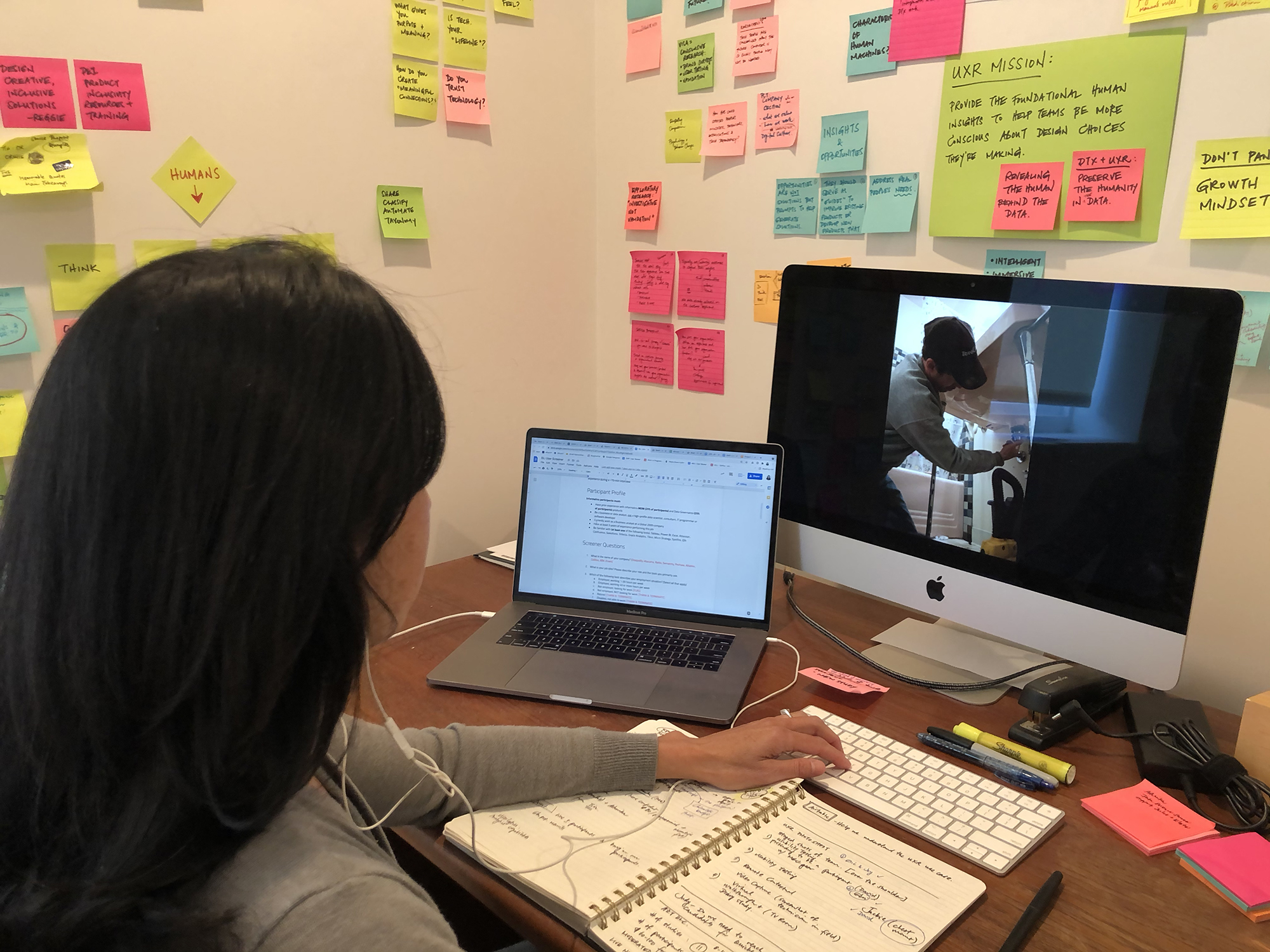
Things to Keep in Mind:
- Self-Reported Data
With diary studies and photo studies, you rely on participants to self-report their behaviors and opinions in response to specific prompts and tasks we determine. This means participants may not accurately report on their true behaviors and actions. What they do versus what they say they do is oftentimes very different. Sometimes participants also feel pressure to tell you what they think you want to hear. This can happen when doing either traditional contextual interviews and remote contextual interviews.
- Embrace Spontaneity
One of the things we appreciate about diary studies and virtual tours is that participants can be spontaneous and bring up topics that weren’t part of an interview. Surprises like these give the opportunity to view things through a different lens, one that helps to look past your original line of inquiry.
- How to Manage Lots of Data
Diary studies yield loads of useful qualitative data (and light quantitative data) because it covers an extended period of time. However, don’t underestimate how long it may take to review and analyze all of those responses since you’re gathering data over time vs. one instance. Without clear analysis objectives, it’s easy to get tangled in the mess of so much data. Revisit your initial research questions, dig into the diary entries you’ve collected, and find the answers. It’s easy to get overwhelmed by hours of video footage from virtual tours and walkthroughs, which is why it’s useful to keep time stamped notes and tag key moments. Give yourself more time than you think you’ll need because it can be difficult when you get ahead of the data you’re collecting.
Evolving Research for the Future
As the Research Director at Punchcut, my research team and I have overseen countless collaborations to transform research into actionable insights for emergent technologies with product and design teams over the years. Each research project has given us innumerable learnings about how to optimize research methodologies for any given set of conditions and constraints. Every refinement we’ve gained about the research process, we directly apply to our research partnerships with brands like Samsung, Google, Toyota, and Visa to improve their product or service design experiences. Though we’ve had great success with the approaches to remote contextual inquiries outlined here, we are continuously learning, experimenting, and enhancing our research practice — remote or otherwise.
In-person research will always add an irreplaceable dimension to our understanding about people but we need to evolve with the world as it becomes equally integrated with a remote lifestyle. There is a genuine connection we make when we’re physically in a participant’s natural context; what we now know from our recent experiences is that there are alternative ways to understand context even when you are distances apart. We hope these tips are useful for you and your team in your efforts to keep research efforts flowing seamlessly — no matter where your research subjects are located — as you work to design the most cutting-edge products and user experiences.
To learn more about Punchcut’s research services visit us here.
A Punchcut Perspective
Joy Wong Daniels – Director, UX Research
© Punchcut LLC, All rights reserved.

